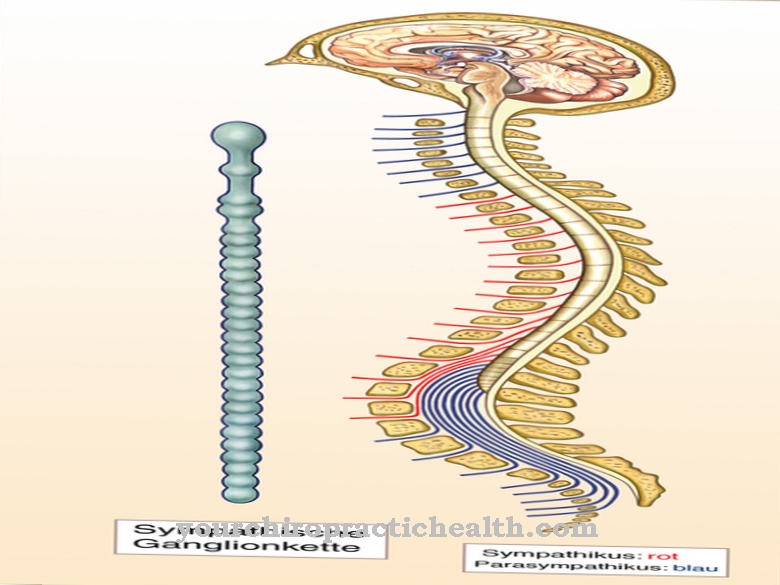The most famous form of Scanning laser polarimetry is the GDx scanning laser polarimetry, which is used in ophthalmology for the diagnosis and control of cataracts and enables this disease to be diagnosed up to five years earlier than all previous measurement methods.
Polarimetry uses the polarization properties of light by means of a laser scanner and thus determines the layer thickness of the optically transparent retina, so that signs of deterioration of the transparent material are made visible. The strength of the retina determined in each case is color-coded and compared by the ophthalmologist with a series of normal values, so that the doctor can possibly make a glaucoma diagnosis after the measurement and initiate therapy measures at an early stage, which ideally avoids impending visual field impairments.
What is Scanning Laser Polarimetry?

The medical professional understands scanning laser polarometry to be an objective method for determining the layer thickness of optically transparent materials. The measurement is carried out using a laser scanner. The method makes use of the polarization property of light. The measuring beam of the laser scanner first runs through a layer, where it is reflected and divided into two polarization states.
These two partial states move on at different speeds, causing a delay. This delay between the polarizations allows conclusions to be drawn about the thickness of the layers. The method is most often used in the form of GDx scanning laser polarimetry, which makes it possible to assess the signs of deterioration of the transparent retina in ophthalmology. To do this, the procedure records the three-dimensional profile of the optic nerve head. The thickness of the nerve fiber layers that cover the retina near the optic nerve is also determined.
Function, effect & goals
Scanning laser polarimetry is primarily used in ophthalmology and is used in this area for early detection and observation of the glaucoma. This disease initially creates high intraocular pressure. This unnaturally high pressure ratio causes the fibers of the retina to perish piece by piece and can ultimately make the eye blind. Due to the transparency of the retina, the damage caused by such a process can only be recognized when more than half of all retinal fibers have died and the visual field is severely impaired.
Since retinal fibers do not regenerate, retinal damage cannot be revised with such a late diagnosis. With scanning laser polarimetry, the ophthalmologist can assess and observe any retinal fiber damage much earlier. Even the smallest changes in the retina catch his eye, which remain invisible with other procedures. During polarimetry, the ophthalmologist first illuminates a single point on the retina with the laser scanner and measures the intensity of the reflectivity. This principle is ultimately applied to up to 100,000 different points on the retina, which takes around two seconds per eye.
The laser scanner creates a fundus image from the polarimetry measurement data. This fundus image codes the reflectivity of the individual layers in color. A yellow highlight stands for high reflectivity, while dark brown highlights encode low reflectivity. All intermediate levels are recorded in shades of red. The ophthalmologist evaluates the fundus image created in this way after the procedure. He compares the respective data with a reference value that corresponds to a culturally independent average value.
The results of this comparison provide information about the layer thickness and the physician records it in a deviation display using the standard values. Often he also creates a so-called TSNIT diagram on this basis. It shows the respective thickness of the layer in a circular path that runs from the temporal sector over the upper, nasal and lower sectors back to the starting point. The standard values of the layer thickness are shaded in this diagram, which makes deviating measured values recognizable as emerging from the shaded area.
You can find your medication here
➔ Medicines for eye infectionsRisks, side effects & dangers
The objective method of scanning laser polarimetry is completely harmless and painless. It can be performed on an outpatient basis and is completed in seconds. Medication is not given in advance or afterwards. The patient is thus spared the dilation of the pupil caused by drops, which many people find unpleasant.
The measurement also does not affect vision any further. The patient can therefore safely drive machines and vehicles on the same day. Usually, the ophthalmologist sets two separate appointments for scanning laser polarimetry of the retina, which are at least a year apart. In the case of shorter periods of time between the two dates, the actual expiry can only be assessed with difficulty using the procedure. Ultimately, the scanning laser polarimetry method enables cataracts to be diagnosed up to five years earlier.
With an immediately connected therapy, impairing visual field defects can often be avoided with such an early diagnosis that polarimetry has taken on a revolutionary role in the field of glaucoma treatment. Since the method is a rather newer procedure, statutory health insurances have not usually covered the costs of the treatment so far.
Private health insurances, on the other hand, usually bear a large part of the treatment costs or even cover the entire amount. Because polarimetry as an objective measurement method does not require any cooperation from the patient and is independent of his own impressions, the method can also be used on unwilling patients, mentally impaired patients or children with unchanged, meaningful results.

























.jpg)

.jpg)
